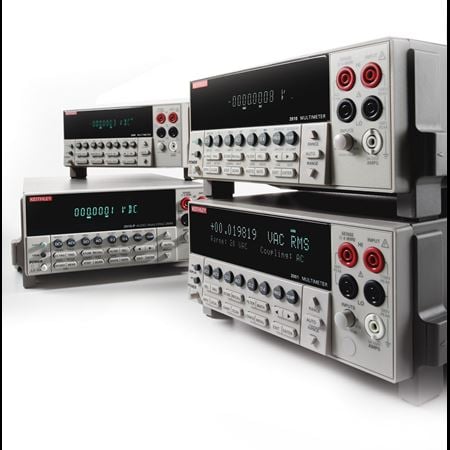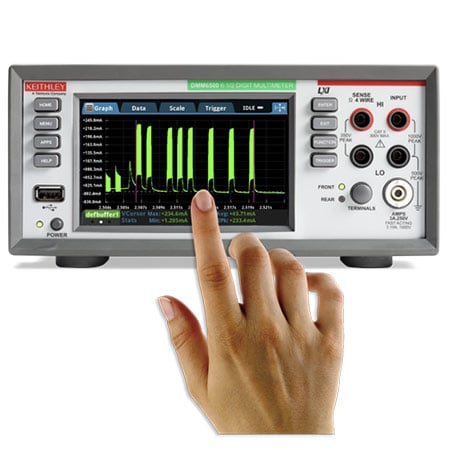Question :
What is a DMM (Digital Multimeter)?
Answer :
Though DMM can mean a lot of things, including “don’t message me,” a popular brand of climbing gear and an entertainment e-commerce site, the most common meaning of DMM is digital multimeter. A DMM is a standard test and measurement instrument used by electrical engineers and technicians to measure multiple electrical stimuli, including voltage, current and resistance. It combines the features of a voltmeter, ammeter and ohmmeter, and is used to verify the state of a system or circuit for safety purposes.
To learn more about the various applications of a DMM and how to use a DMM, visit our “What is a Digital Multimeter?” blog post.
How do I choose a DMM (Digital Multimeter)?
There are a number of factors to consider when choosing the right DMM for your application, including speed, accuracy, the number of channels and where you plan to use your DMM. To compare models and find the right DMM for your application, shop Tektronix and Keithley digital multimeters.

How does a DMM (Digital Multimeter) measure current?
Using a DMM to measure current is very simple. A DMM measures current by becoming part of the circuit itself and measuring the current as it passes through the instrument. Learn more about how to break your circuit and take measurements with these step-by-step instructions for how to measure current with a DMM.
This FAQ Applies to:
Product Series: DMM7510 7.5 Digit Graphical Sampling Multimeter Keithley DMM6500 6.5 Digit Multimeter with Graphical Touchscreen Keithley DMM7512 Dual Channel 7.5 Digit Sampling Multimeter Keithley 2110 5.5 Digit Multimeter with Dual Display Keithley 2100 Series: 6.5 Digit USB Multimeter Keithley 2001 Series: 7.5 Digit Digital Multimeter with Scanning Keithley 2010 Series: 7.5 Digit Digital Multimeter with Scanning Keithley 2002 8.5 Digit Multimeter with Scanning Total Harmonic Distortion and Audio Analyzer Multimeter (Discontinued) Keithley 2000 Series: 6½-Digit Multimeter with Scanning (Discontinued)
Product:
FAQ ID 783013
View all FAQs »

